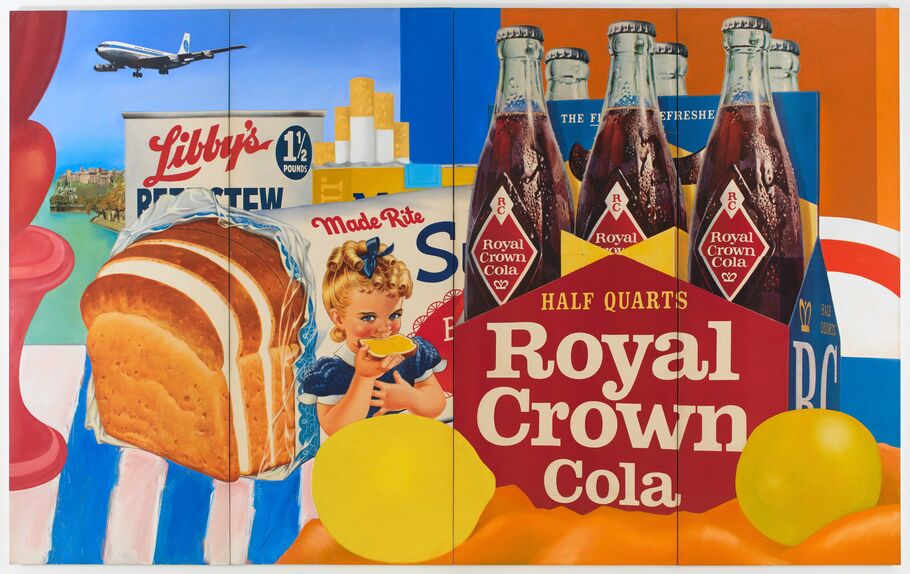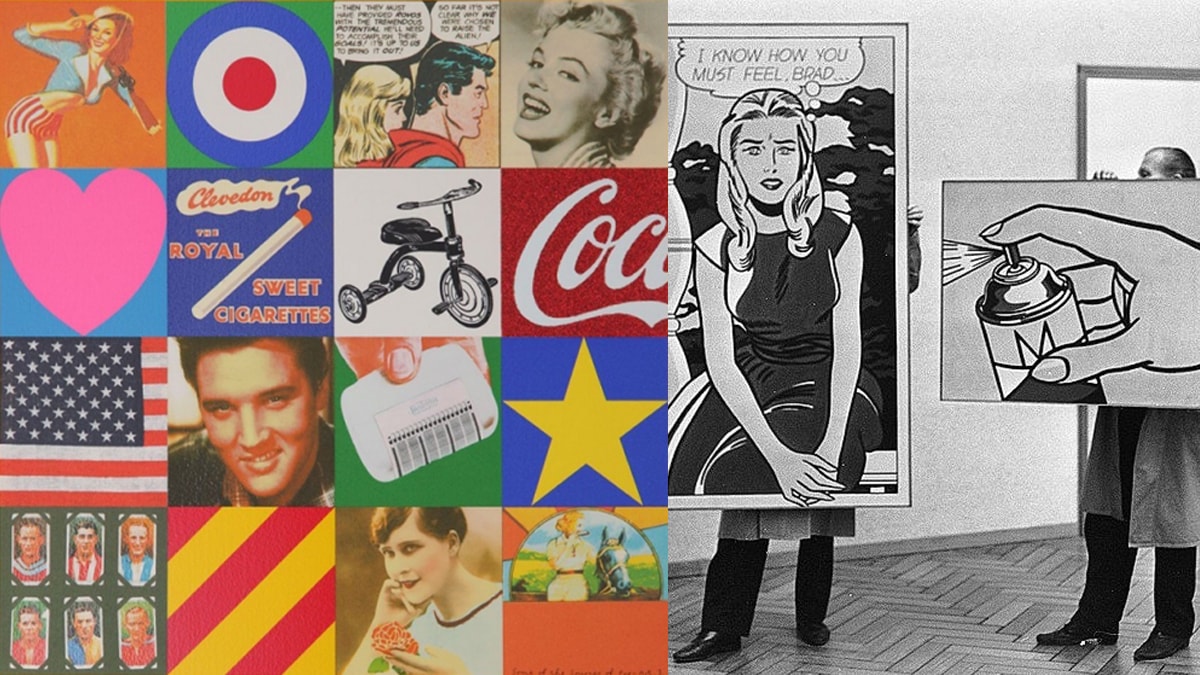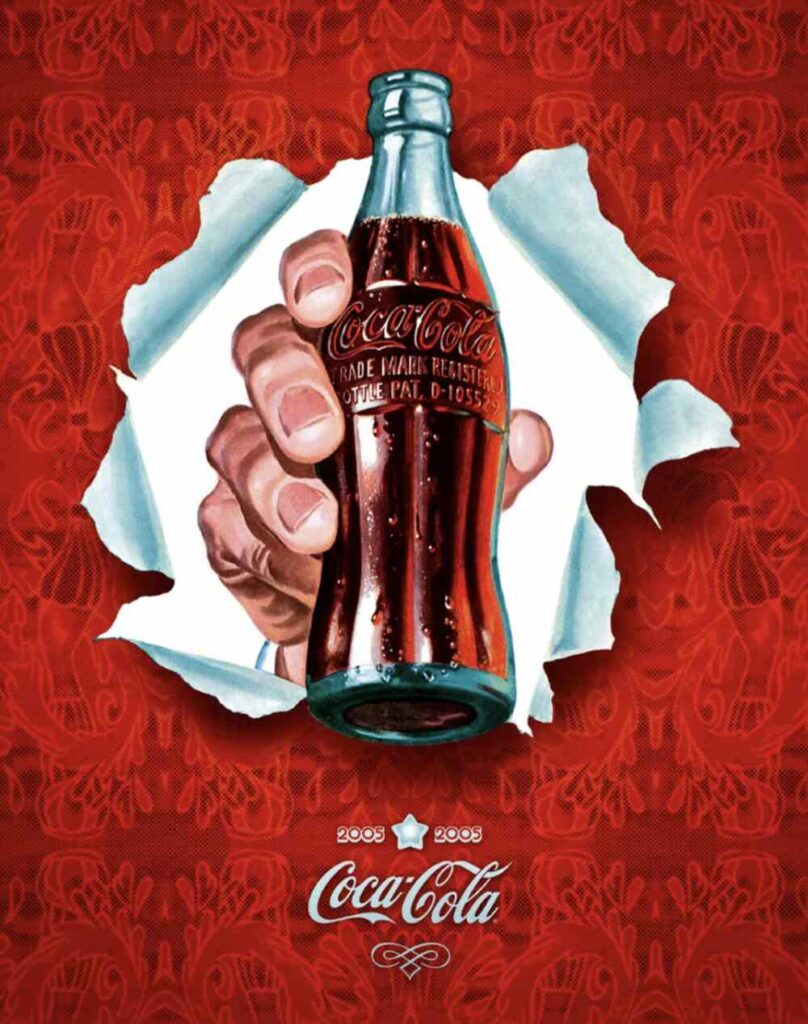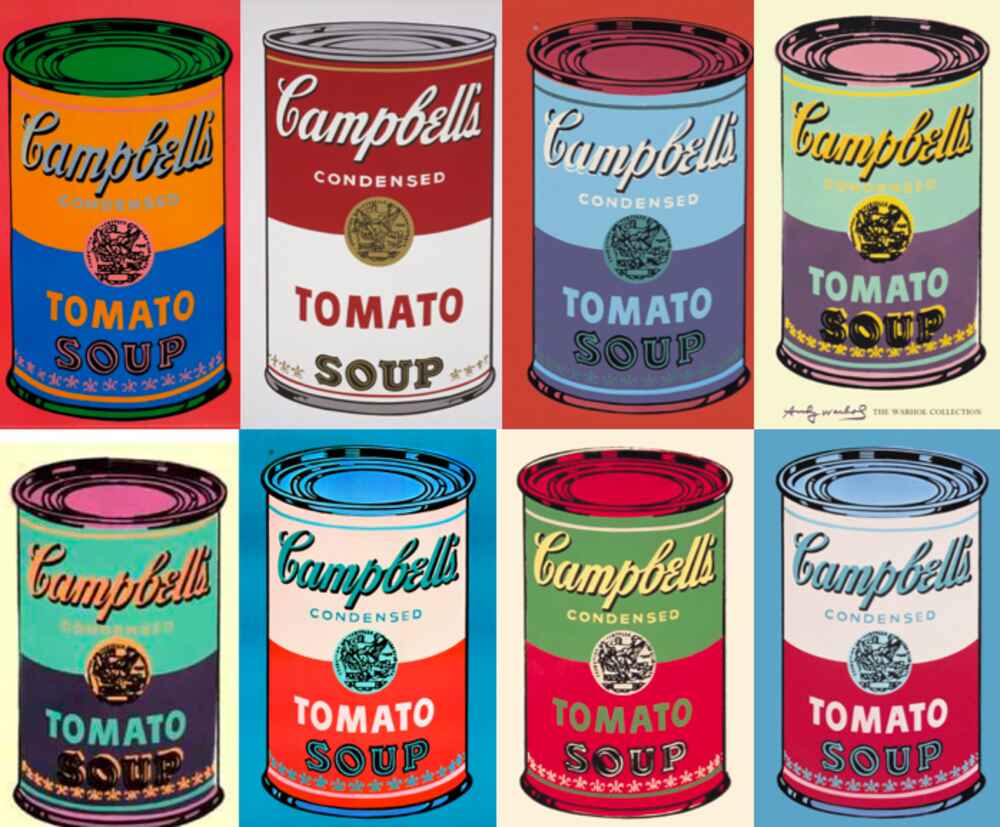Pop Art’s Bite Back: How Fake Advertising Became Fuel for Artistic Critique
Pop Art, that vibrant, irreverent movement of the 1950s and 60s, wasn’t just about Campbell’s soup cans and Marilyn Monroe portraits. Beneath the shiny surfaces and bold colors lurked a sharp critique of consumer culture, its most potent weapon being the appropriation of one of its own tools: fake advertising.
From Mass Production to Mass Appropriation:
Post-war America saw an explosion of consumerism. Advertising, the engine of this burgeoning desire, flooded streets and screens with glossy promises of happiness through every new gadget, detergent, and cigarette. Pop artists found themselves surrounded by this fabricated reality, and it sparked a rebellion. They saw through the airbrushed perfection, the carefully crafted narratives, and decided to use them against themselves.
Brillo Boxes and Soup Cans:

Andy Warhol, arguably the Pop Art kingpin, was a master of this subversion. His “Campbell’s Soup Cans” (1962) weren’t simply a celebration of everyday objects; they were a sly poke at the mass production and homogenization that defined the era. By elevating the mundane to the level of fine art, Warhol challenged the very values that advertising held dear – uniqueness, exclusivity, and aspiration.
Claes Oldenburg took it a step further with his colossal “Three-Way Plug” (1969). This giant, inflatable replica of a mundane household item mocked the absurdity of consumerism’s tendency to inflate the ordinary into something desirable. It forced viewers to confront the manufactured nature of desire itself, laid bare by the sheer ridiculousness of a monumental plug.
From Brands to Brandscapes:
But Pop Art wasn’t just about individual products. It also set its sights on the wider advertising landscape. Roy Lichtenstein’s comic book-inspired works like “Whaam!” (1963) borrowed the bold lines and dramatic narratives of advertising illustrations, exposing their manipulative tactics and shallow emotional appeals. His exaggerated depictions of war and romance laid bare the artificiality of the emotions used to sell everything from soap to patriotism.
Even the seemingly playful works of Richard Hamilton couldn’t escape the critical bite. His “Just What Is It That Makes Today’s Homes So Different, So Appealing?” (1956) is a collage of consumerist elements – a muscleman, a TV, a vacuum cleaner – all arranged in a sterile, idealized living space. The jarring juxtaposition of these disparate elements served as a scathing commentary on the constructed nature of the “American Dream” sold through advertising.
Fake Advertising as Mirror and Mockery:

What made Pop Art’s use of fake advertising so effective was its ability to hold a mirror up to society and show its own distorted reflection. By manipulating the same tactics and aesthetics used to sell products, Pop artists exposed the hollowness behind the promises of wealth, happiness, and perfection. Their fake ads weren’t meant to deceive; they were meant to jolt the viewer into awareness, to make them question the reality they were being constantly bombarded with.
Beyond the 60s: A Legacy of Skepticism:
While Pop Art’s heyday may have passed, its impact on our relationship with advertising remains profound. We see echoes of its critical spirit in contemporary artists like Barbara Kruger, whose bold, text-based works challenge consumerism and social inequalities. The rise of “ad-busting” movements also owes a debt to Pop Art’s pioneering spirit, as they continue to subvert and parody commercial messages.
In a world saturated with increasingly sophisticated marketing tactics, Pop Art’s legacy reminds us to maintain a healthy dose of skepticism. It encourages us to look beyond the shiny surfaces and question the narratives presented to us. By appropriating and manipulating the language of advertising, Pop artists gave us the tools to dissect its underlying messages and reclaim our own agency as consumers. They showed us that, sometimes, the most effective way to critique a system is to use its own tools against it, turning fake advertising into a powerful instrument of artistic truth.
Beyond Appropriation: Deconstructing and Reassembling the Brand Image

While Pop Art’s early champions like Warhol and Lichtenstein mastered the art of appropriation, the movement went beyond simply mimicking existing ad campaigns. Artists like Jasper Johns and Robert Rauschenberg delved deeper, dissecting the visual language of advertising and reassembling its fragments into new, often unsettling, compositions.
Johns, for instance, took everyday objects like beer cans and flags, stripping them of their commercial context and recontextualizing them as art. His “Three Flags” (1958) presents not a proud national symbol, but a series of deconstructed and reassembled flag motifs, questioning the very notion of patriotism and its manipulation through imagery.
Rauschenberg, meanwhile, employed a collage technique that pushed the boundaries of visual coherence. Works like “Combination II” (1955) juxtapose magazine clippings, advertisements, and everyday objects, creating a jarring yet strangely compelling visual cacophony. These collages don’t just critique advertising; they deconstruct it, revealing the fragmented and artificial nature of the reality it constructs.
From Products to Personalities: Pop Art Takes on Celebrity Culture
As consumer culture became increasingly intertwined with celebrity, Pop Art turned its critical gaze towards the manufactured personas and carefully curated images of Hollywood stars. Andy Warhol’s iconic Marilyn Monroe silkscreens transformed the actress from glamorous sex symbol into a mass-produced image, highlighting the commodification of celebrity in the age of mechanical reproduction.
Similarly, Richard Hamilton’s “Just What Is It That Makes Today’s Homes So Different, So Appealing?” features Elvis Presley alongside household appliances, blurring the lines between consumer desire and fan worship. These works expose the constructed nature of celebrity and the way advertising exploits our fascination with fame to sell everything from perfume to blue jeans.
Pop Art’s Legacy: A Skeptical Lens in the Digital Age

Pop Art’s influence extends far beyond the 1960s. Today, in an age bombarded with digital advertising and social media influencers, its critical approach remains as relevant as ever. Artists like Barbara Kruger and Jenny Holzer continue to subvert commercial messages with bold text-based works that challenge power structures and social inequalities.
The rise of “ad-busting” movements and parody culture also reflects Pop Art’s legacy. Online communities like Brandalism repurpose and subvert corporate logos and slogans, highlighting the absurdity and often harmful messages embedded within advertising.
Pop Art’s enduring impact lies in its ability to equip us with a skeptical lens in the face of endless marketing messages. By exposing the techniques and ideologies behind advertising, it empowers us to question the narratives we’re constantly bombarded with and make informed choices as consumers. Whether it’s the glossy images in magazines, the targeted ads on our social media feeds, or the carefully crafted influencer posts, Pop Art reminds us to look beyond the surface and ask: what is being sold, and at what cost?
Conclusion
In conclusion, Pop Art’s engagement with fake advertising wasn’t just a playful artistic experiment; it was a critical intervention in the cultural landscape of its time. By appropriating, deconstructing, and reassembling the tools of consumerism, Pop artists like Warhol, Lichtenstein, Johns, and Rauschenberg provided us with a powerful visual vocabulary to critique the manipulative tactics of advertising and the constructed nature of desire. And in the age of ever-evolving marketing strategies, their legacy remains a vital reminder to approach the world of advertising with a healthy dose of skepticism and a critical eye.



